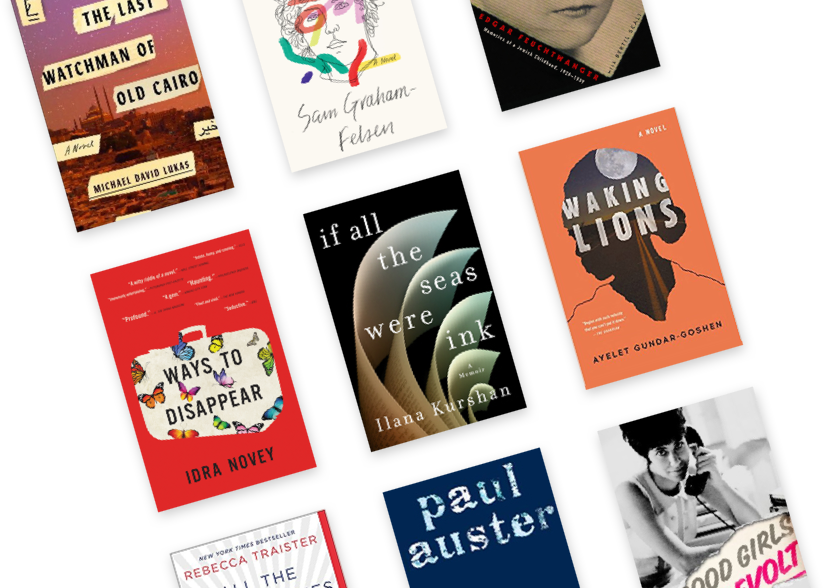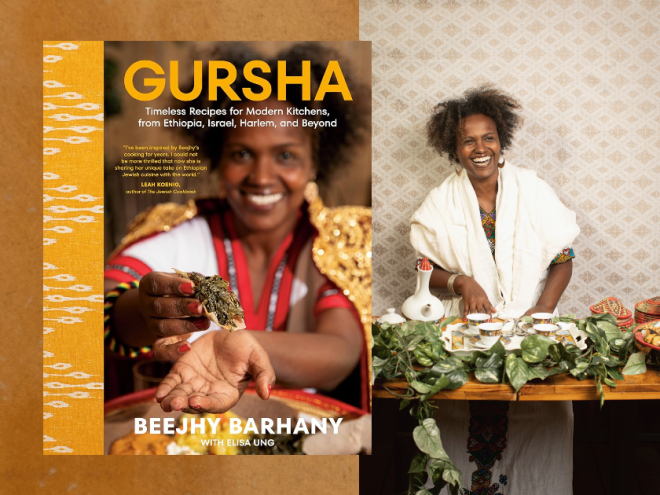You may be familiar with Tsion Cafe, an Ethiopian Israeli fixture of the Harlem neighborhood of New York City. Known for its tangy injera, piquant shakshuka, piping hot malawach anointed with pats of butter and rivulets of honey, Tsion is unique among kosher establishments in Manhattan and a fan favorite. If you can’t make the trek to Harlem, you are in luck because Tsion Cafe’s owner, the formidable Beejhy Barhany, has graciously encapsulated the spirit and flavors of the restaurant in her first cookbook, written with Elisa Ung.
Gursha: Timeless Recipes for Modern Kitchens, from Ethiopia, Israel, Harlem and Beyond is named for the Amharic word that means “mouthful” and refers to the practice of feeding those you love from your hand to your loved one’s mouth. The book is at once an intimate autobiography and a refreshing cookbook. It begins with essays describing Barhany’s childhood in Ethiopia, a temporary stay in Sudan, and her family’s ultimate, hard-won entrance to Israel. Although the story of Ethiopian Jews’ journey to Israel is one many might know in the abstract, it is a too rare an occurrence to hear it from a personal perspective like the one Barhany generously offers in Gursha. We learn of her childhood eating dabo bread and spending Shabbat deeply connected to her community and spirituality in Ethiopia. Barhany then takes us to her family’s stay in Sudan, where they had to hide their Jewishness but took risks to observe Shabbat fully. Next, we learn of the taste for spices and sweet, yeasted doughs she developed as a young person in Israel, the home she longed to go to as a girl. Barhany also, however, describes the exclusion and suspicion she faced as an Ethiopian arriving in Israel. Throughout, Gursha is studded with the recipes she was born into and brought with her to Sudan, then Israel, and now Harlem. Spliced among her recipes are profiles on family members, friends, and community members — stories that rival Barhany’s recipes in their depth.
Although I would have been satisfied with Barhany’s family stories and pictures alone, her recipes left my mouth watering and my palette decidedly refreshed. Gursha is a combination of recipes from different eras of Barhany’s life. There are Ethiopian restaurant classics like the chickpea flour stew, shiro, and the Shabbat staple chicken dish, doro wat. There are recipes in line with day-to-day Ethiopian home cooking like a nutty sunflower seed dressing tossed through a simple, bright salad; and Israeli staples like babka and shakshuka. My favorite section of the book is her dessert section, a decidedly unexpected combination of African American and Israeli preparation styles fused with Ethiopian flavors. Recipes for legamat (fried Sudanese doughnuts) Barhany picked up while living in Sudan, a carrot coconut ginger celebration cake inspired by her husband’s Caribbean roots, and a shahi-spiced praline babka all caught my eye. Any one would go well alongside a cup of spiced Ethiopian coffee, bunn, or honey wine.
Gursha is a welcome reminder that Jewish food exists beyond hummus and matzo ball soup. Rather, as Gursha confidently and competently reminds us, Jewish food refers to a constant and global fusion of flavors, characterized by the ubiquity of Jewish movement and the specificity of each place Jews have called home.
Hannah Kressel is a current fellow at the Pardes Institute of Jewish Studies in Jerusalem. She holds a Masters in Art History from the University of Oxford and a Bachelors in Art History and Studio Art from Brandeis University. Her research examines the intersection of contemporary art, food, and religion. She is an avid baker and cook.





